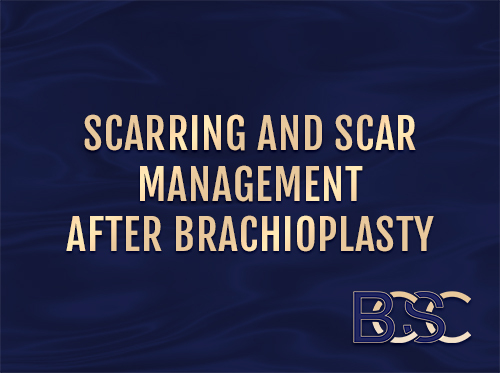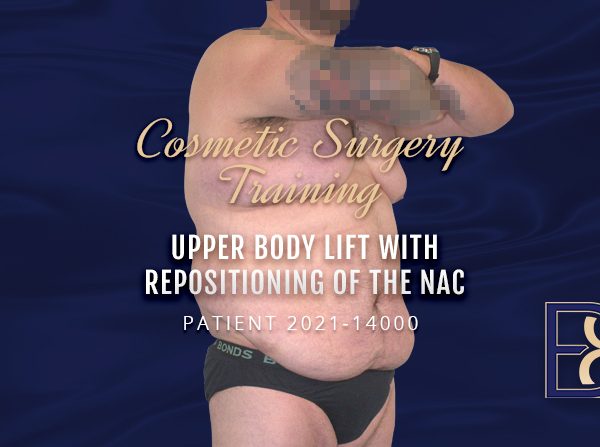Thigh Lift Surgery Guide
Saggy thighs are fairly common after massive weight loss. Many patients desire slim, toned thighs after they have worked hard to reach a healthy weight on the scale. Thighplasty is a surgical procedure that improves the upper leg contour by removing excess skin and fat from the thigh area.
Causes of thigh skin laxity
Skin has finite elasticity. Weight gain can stretch the skin beyond its normal limit. Often, the damage is not apparent until a person loses weight. During obesity, the underlying fat acts as a layer of padding below the skin surface. This causes the overlying skin to appear plump and firm. After significant weight loss, the skin frequently appears loose and deflated once the fat padding is gone.
Because the thighs are predisposed to store fat more than other areas of the body, it is no surprise that massive weight loss patients are often dismayed to find sagging thigh skin holds them back in life even after achieving their weight loss goal.
Why is thigh laxity a problem worth treating?
Patients who have excessive thigh skin and fat after weight loss may experience:
- Thigh chafing
- Social isolation
- Reduced mobility
- Feelings of inadequacy
- Discomfort and skin rashes
- Poorly contoured upper legs
- Difficulty finding clothes that fit well
Diet and exercise cannot tighten skin that has stretched beyond its limit. After major weight loss, body contouring procedures such as thighplasty may be necessary to create a tighter skin envelope.
What is a thigh lift?
Thigh lift surgery involves removing the lax skin and underlying fat through an incision on the thighs. It is usually performed on patients who have lost a significant amount of weight due to bariatric surgery or extreme dieting and exercise.
Benefits of thigh lift surgery
Post-bariatric patients may choose to undergo thigh lift surgery in order to have:
- Tighter thigh skin
- Improved mobility
- Slimmer upper legs
- Fewer skin irritations
- Increased confidence
- Clothing that fits better
- A more proportional body
- Less discomfort from thighs rubbing
Disadvantages of thigh lift surgery
While thighplasty has numerous benefits, these are some factors to consider before deciding to have the surgery:
- It can be costly
- All surgery carries risks
- There will be a thigh lift scar
- Mobility is limited in early recovery
- Insurance rarely covers thigh lift surgery
- Most patients require two to three weeks off work
Who is a candidate for thigh lifting?
Thigh lift surgery is best suited to individuals who:
- Have lost weight
- Are in good overall health
- Have reached a normal BMI
- Maintain a stable weight for 6+ months
- Understand the thigh lift scar is permanent
- Accept that risks and complications may occur
- Can take approximately time off work to recover
- Do not use nicotine products or are willing to quit
To learn if thighplasty is right for you, speak with a qualified specialist surgeon who has experience in post-weight-loss body contouring.
Types of thigh lifts
There are several types of thigh lifts. Most can be performed with or without liposuction. The surgical method depends on the location and severity of redundant skin and fat within the thigh area. Different surgeons may use different surgical techniques and incision patterns.
Crescent thigh lift
Sometimes referred to as a short-scar thigh lift or mini inner thigh lift, this procedure addresses the upper two-thirds of the inner thighs only. The incision is placed near the bikini line. Skin tightening is minimal as a modest amount of excessive skin and fat are removed through a wedge-shaped resection near the groin.
Vertical inner thigh lift
Also known as a full inner thigh lift or elongated medial thigh lift, this procedure removes excess inner thigh skin and fat with a vertical incision that extends from the knee to the groin.
Lateral thigh lift
Also called an outer thigh lift, this procedure removes excess skin and fat on the outermost portion of the thighs. The incisions are usually placed on or near the hip.
Important note
Many surgeons refer to different thigh lift techniques with various names. Incision patterns can vary greatly. The patient should consult with the surgeon to ask about the surgeon’s preferred incision technique and expected scar placement before undergoing a thigh lift.
Surgical procedure
Thighplasty is performed under general anaesthesia. The procedure takes approximately three hours. As the patient lies on the operating table, the surgeon marks and resects the excess tissue with an incision on each thigh. After removing the excess tissue, the surgeon closes the incision. Some patients are cleared to go home the same day while in other cases an overnight hospital stay may be required.
Recovery
Rest and limited physical activity are advised during the first six weeks to facilitate healing. Most patients can expect to take two to three weeks off work to recover. Nicotine use, Vitamin E, blood thinners, and exercise are restricted during the recovery period.
When can I shower after thigh lift surgery?
Showering may resume 24 to 48 hours after surgery, or as directed by the surgeon. Take care to avoid irritating or scrubbing the incisions. Sponge baths may be easier initially.
Is a thigh lift painful?
There is no pain during the surgery due to general anaesthesia. The degree of post-operative discomfort varies based on the extent of surgery as well as individual differences in pain tolerance. Most patients find the discomfort is manageable and responds well to prescribed analgesics.
Walking upright and sitting can be quite uncomfortable during the first ten days. Mobility is limited initially, e.g. climbing stairs and driving, although short walks are encouraged to lower the risk of blood clots. Soreness, burning, and shooting pains may persist for three months or longer as the nerves recover. While recovering from a thigh lift can be uncomfortable, the discomfort is usually short lived and the results are long lasting.
When is it safe to exercise after a thigh lift?
Exercise is restricted for approximately six to eight weeks. Strenuous physical exertion may result in a slower recovery and increase the risk of complications.
Results
Immediately after surgery, the thighs may appear excessively tight and swollen. There may be puckering or indentations between the superficial sutures. This is a result of inflammation, which is a normal response to surgery. The degree of swelling varies by individual as well as whether tumescent fluid from liposuction is present.
Most of the inflammation subsides in the first month and continues to resolve over the next six months to a year. As the swelling subsides, the tissues relax and settle into the final position. Scar maturation occurs at approximately 12 months post op. Considering these factors, most patients see the final results a year after the initial surgery date.
Risks and complications
A thigh lift is generally considered safe for healthy patients who follow all pre- and post-operative instructions. Complications are possible, even when the surgery is performed by a highly skilled surgeon. Risks may include:
- Seroma
- Infection
- Necrosis
- Blood clots
- Hematoma
- Poor scarring
- Wound dehiscence
- Sutures spitting out
- Uncontrolled bleeding
- Permanent nerve damage
- Bad reaction to anaesthesia
- Undesirable cosmetic results
Consult with the surgeon for more information about other risks and complications that can occur.
Thighplasty FAQs
Find answers to common questions about thigh lift surgery.
What do the thigh lift scars look like?
There are several kinds of thigh lifts, each with its own incision pattern. In a traditional inner thigh lift, the scar is usually oriented vertically on the inner part of the thigh from groin to hip. Different surgeons may use different incisions. The best way to determine the length and position of the scar is to consult with a surgeon who can develop a treatment plan and let you know about the incision placement they intend to use for your surgery.
How long does it take for the thigh lift scar to fade?
Thigh lift scar fading is a process that takes time. Most patients notice the scar begins to fade approximately nine months after surgery. The scar continues to mature over the next one to two years. Silicone sheets or scar gel can be initiated three to six weeks post operatively when crusting is no longer present. Patients who have a history of poor scarring should discuss this with the surgeon prior to thighplasty. Laser treatments, dermabrasion, and cosmetic injectables may help improve the color and texture of scars to an extent.
Does a thigh lift include liposuction?
Many people are predisposed to store excess thigh fat. This adds bulk to the thigh area that may persist even after reaching an ideal weight. Calorie counting and exercise is not always enough to target resistant thigh fat. During a thigh lift, some of the superficial fat that is attached to the excess skin may be surgically removed. Liposuction can also be performed during a thigh lift for additional toning and fat reduction.
Does Medicare cover thigh lift surgery in Australia?
If the thighplasty is medically indicated rather than cosmetic, some individuals may qualify for a rebate using the corresponding MBS item number in Australia. 30171 (Lipectomy) is the most common MBS item number for thigh lift surgery. Strict eligibility requirements apply.
Does private health insurance cover thigh lift surgery in Australia?
Most patients pay out of pocket for thighplasty as excess skin removal is usually considered a cosmetic need. Private insurance plans may issue a partial reimbursement after qualifying for the Medicare item number and completing the necessary paperwork. Contact your insurance provider directly for more information. Top-level cover is usually needed for post-weight-loss surgery coverage.
How much does a thigh lift cost in Australia?
The cost of thigh lifts in Australia vary significantly as it is a highly customized procedure. Different types of thigh lifts are more extensive than others. As the complexity of the procedure increases, so does the cost. Most patients can expect to pay upwards of $5,000 AUD. Undergoing related cosmetic procedures such as liposuction may further increase costs.
The only true way to get an accurate thighplasty quote is to meet a qualified specialist general surgeon for an in-person consultation. After examining the type and extent of tissue removal that is needed to meet your goals, they can provide a quote for the anticipated costs. In Australia, the surgeon fee is typically billed separately from the hospital and facility fees.



